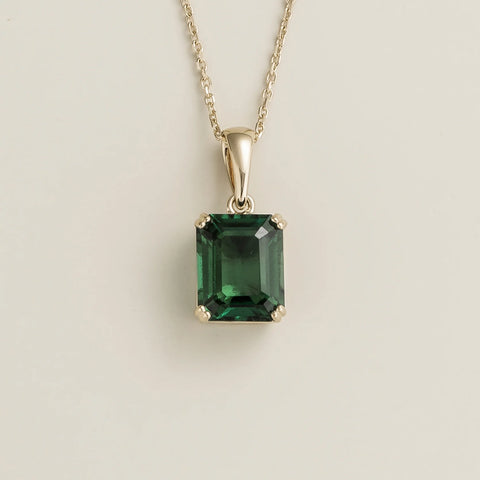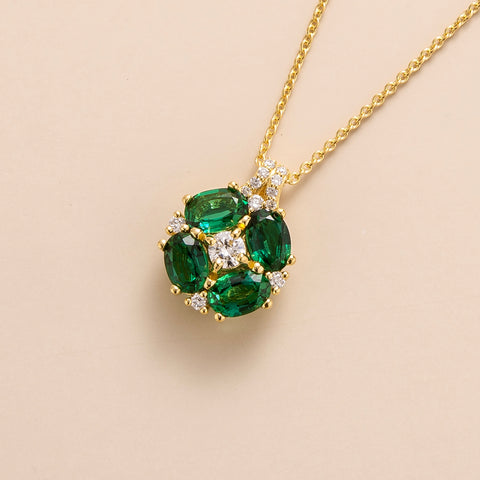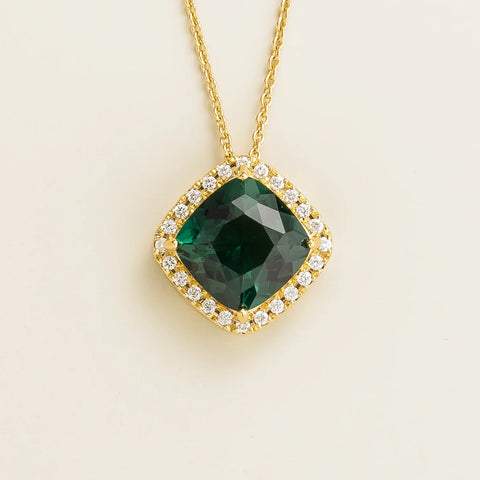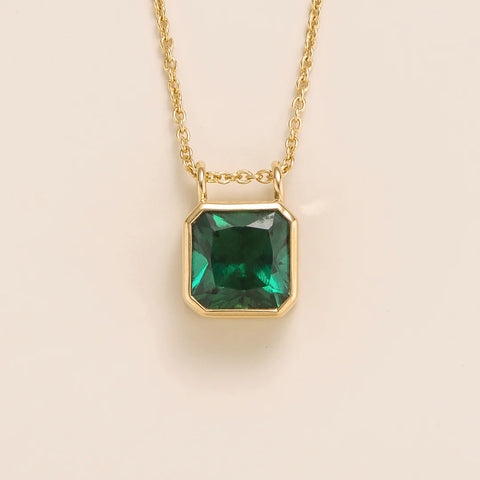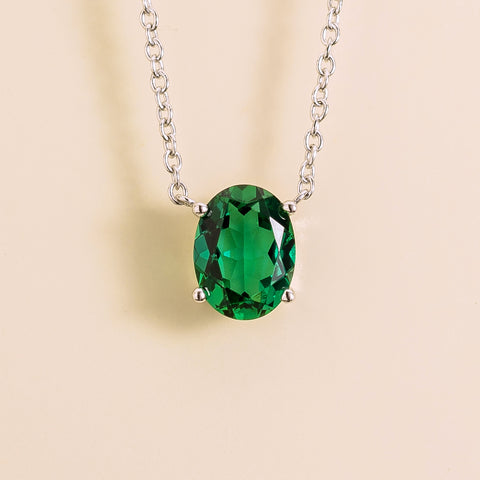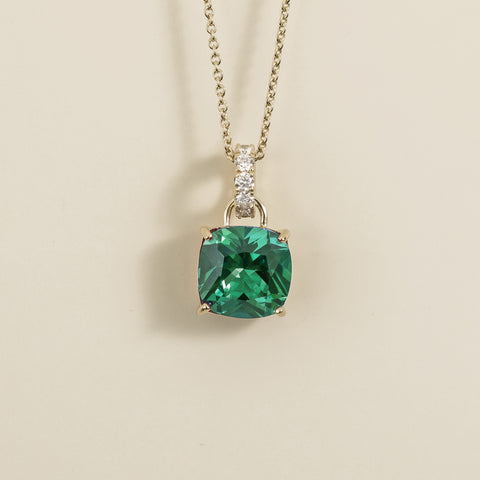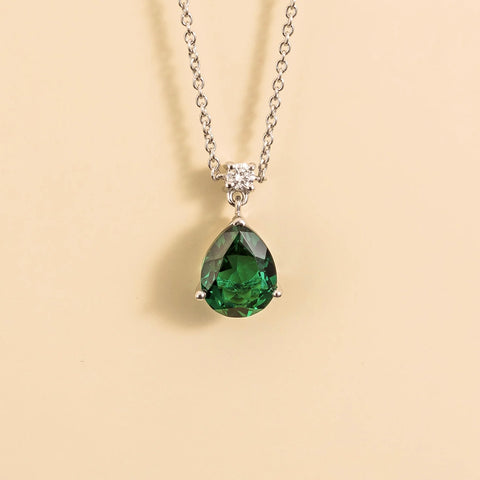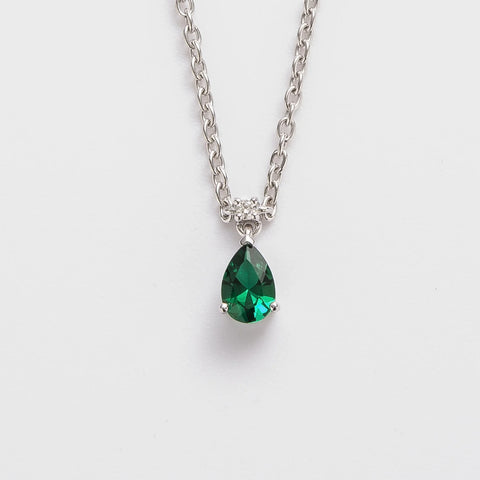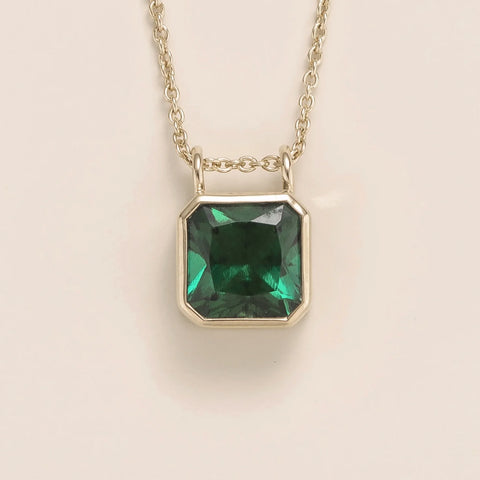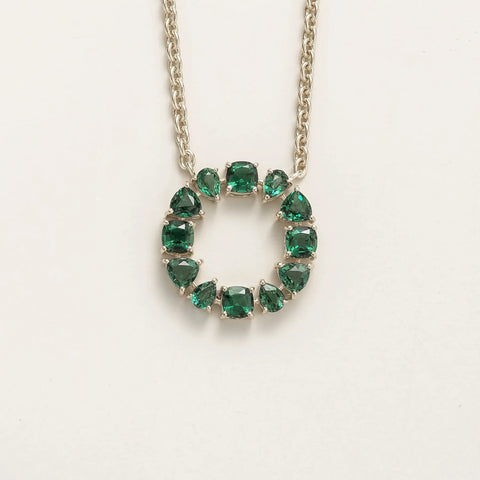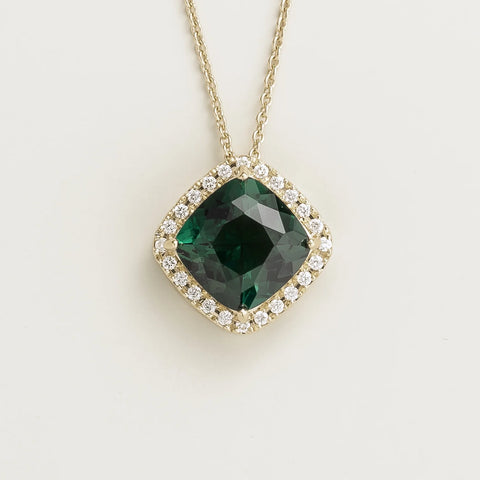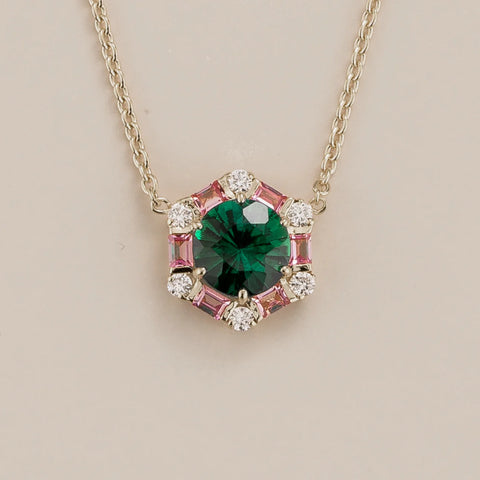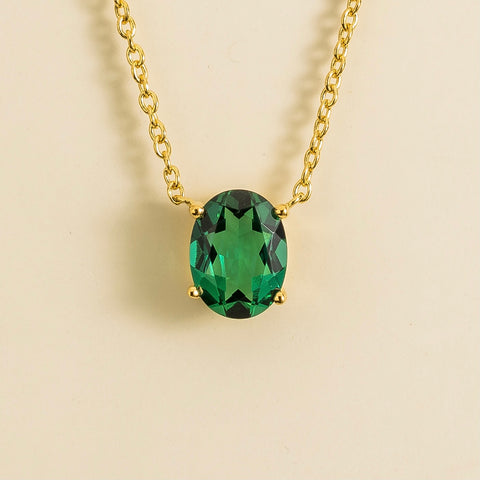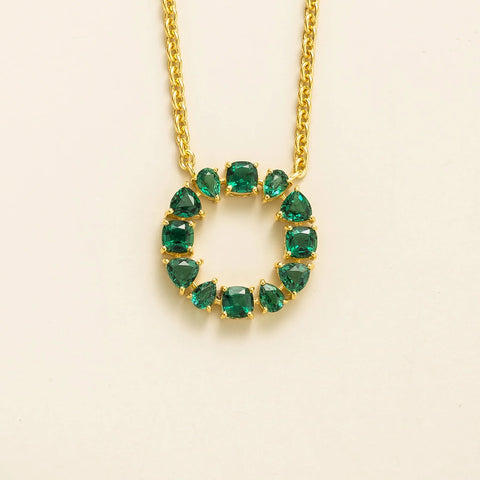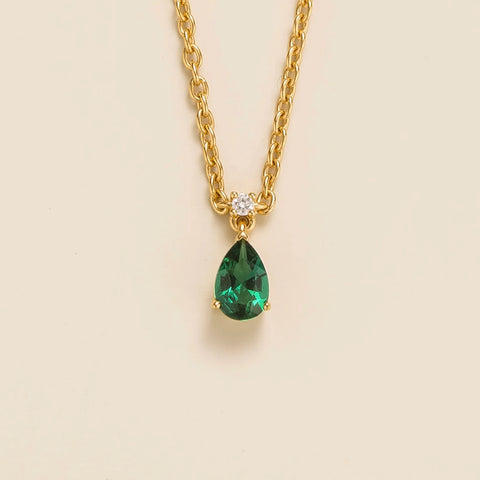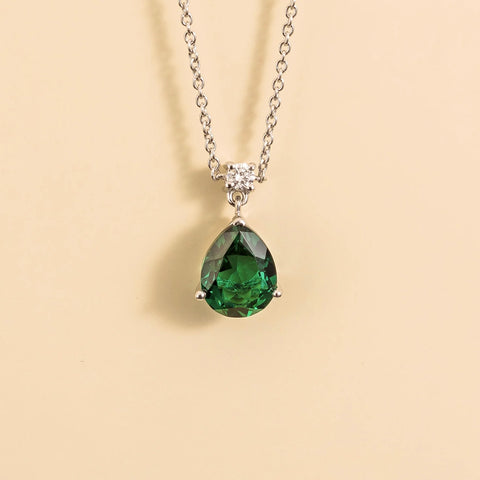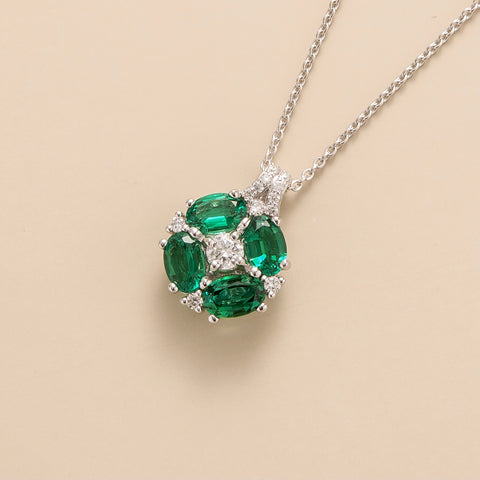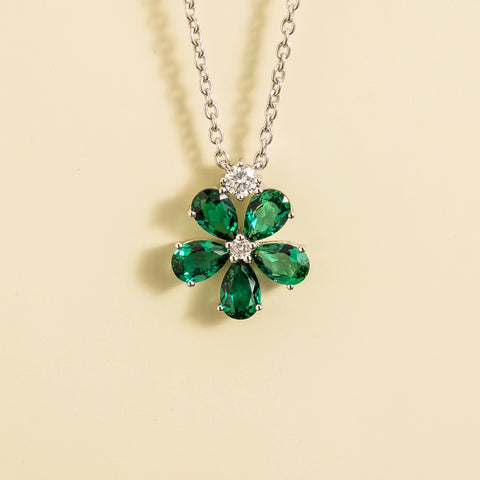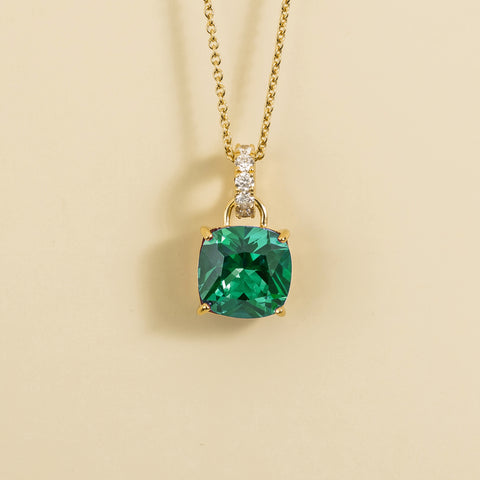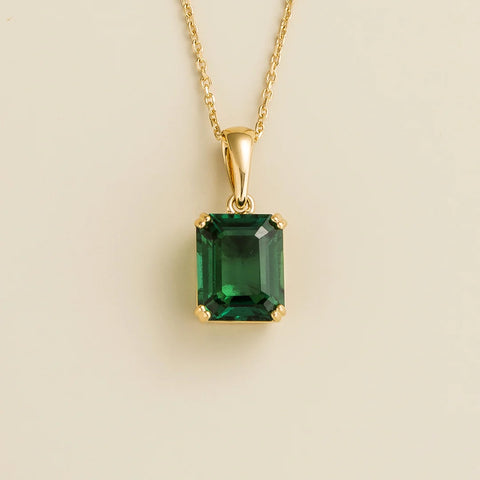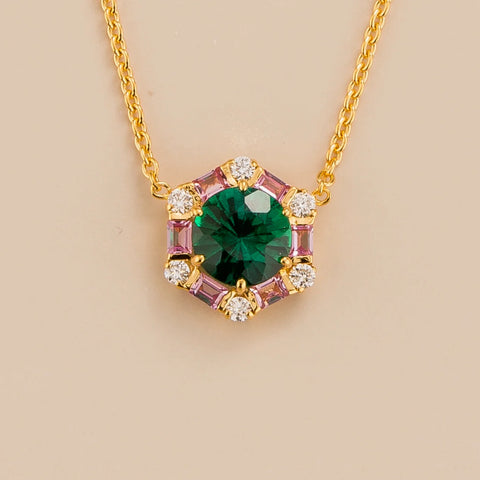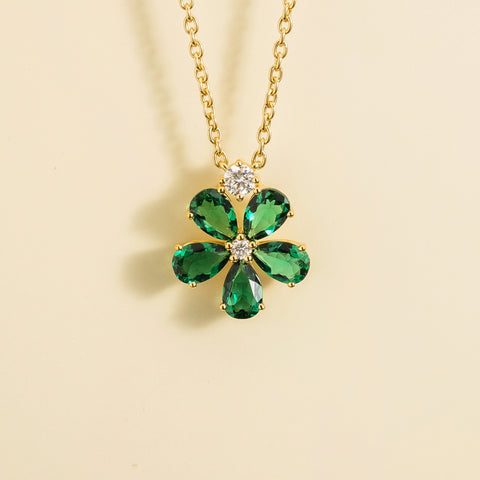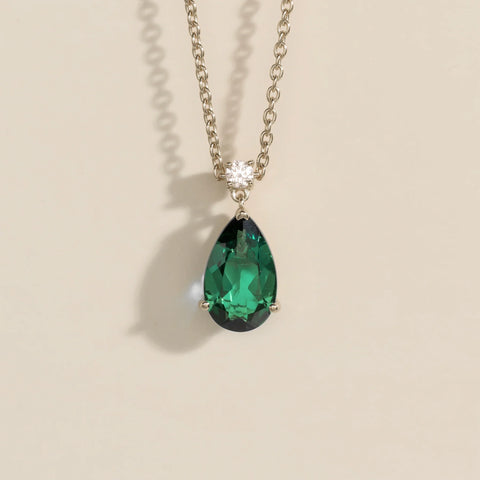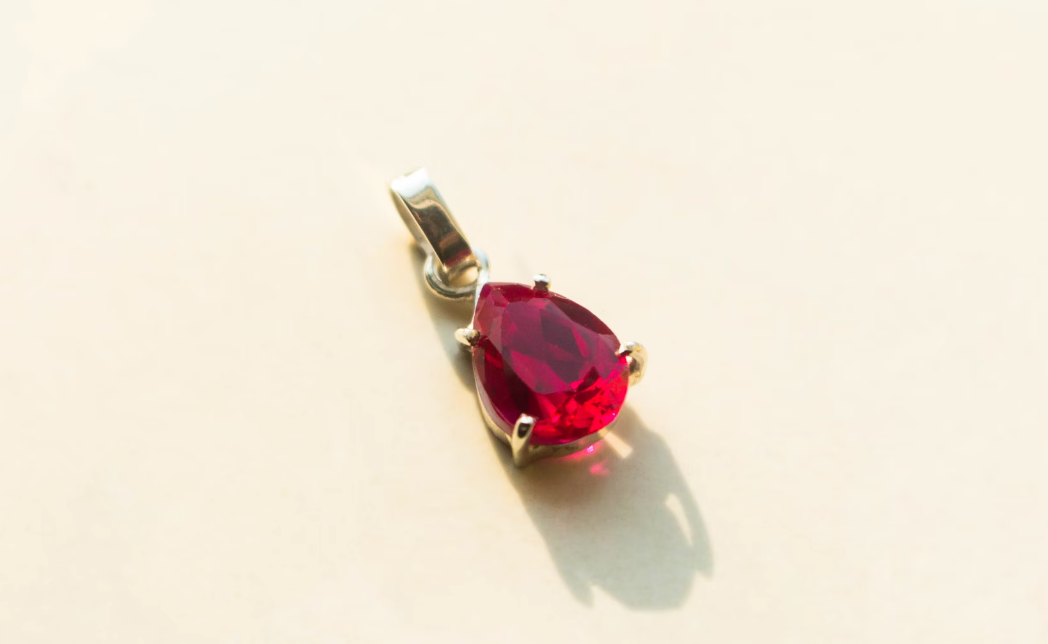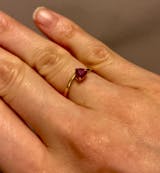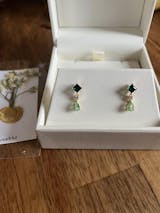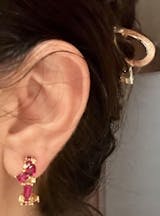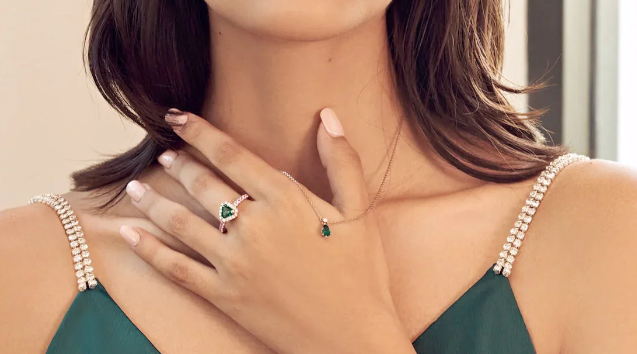
Treasures of Time: The History of Emerald Necklaces
Table of Content: Inside this Article
...Throughout history, jewellery crafted from precious materials like emeralds has held a special place in our fascination with beauty.
Their value, rarity, and timeless elegance have ensured their presence in our fashion repertoire for millennia.
Specifically, emeralds, with their captivating green brilliance, have been a particular favourite.
Emeralds have been cherished and worn as necklaces throughout the ages, from the mines of ancient Egypt to the dazzling displays of today.
This article uncovers the stories behind these exquisite pieces, revealing how emeralds have transcended mere adornment to become cultural touchstones.
Ancient Civilizations and Emerald Necklaces
Egypt boasts the title of the world's earliest known source of emeralds, with mines operational for many years.
Cleopatra VII, the last active pharaoh of Ancient Egypt, was legendary for her love of emeralds.
Historical accounts depict her adorned with these vibrant gems, and some sources claim she even nationalised the emerald mines to secure her supply.
While the exact nature of her collection remains shrouded in some mystery, it cemented the association of emeralds with royalty and luxury.
By the time Cleopatra ruled Egypt (around 50 BCE), the country had become part of the Roman Empire.
These famous emerald mines were documented by ancient writers like Pliny the Elder.
He believed the emeralds possessed healing properties, especially for tired eyes. Pliny even wrote:
"Indeed no stone has a colour that is more delightful to the eye, for whereas the sight fixes itself with avidity upon the green grass and foliage of the trees, we have all the more pleasure in looking upon the emerald, there being no green in existence more intense than this. And then, besides, of all the precious stones, this is the only one that feeds the sight without satiating it…If the sight has been wearied or dimmed by intensively looking on any other subject, it is refreshed and restored by gazing at this stone. And lapidaries who cut and engrave fine gems know this well, for they have no better method of restoring their eyes than by looking at the emerald, its soft, green colour comforting and removing their weariness and lassitude."
Emeralds in South America
Across the Atlantic, another story unfolds.
South America also boasts a rich history with emeralds, particularly in Colombia. The Muzo mines, nestled high in the Andes mountains, have been a source of these precious stones for thousands of years.
Here, emeralds were not just admired for their beauty, but held deep cultural significance.
Emerald necklaces are a stunning choice for adding a touch of sophistication to any ensemble. For expert advice on how to showcase these beautiful gems, explore our article on Emerald Necklace Styling Tips: How to Flaunt Your Emerald Necklace for Any Occasion. Learn the best ways to wear your emerald necklace and make a statement at any event.The Incan Embrace of the Green Gem
The Inca civilization, renowned for their vast empire and architectural marvels, revered emeralds.
They associated the verdant green with fertility, growth, and the life-giving power of nature. Incan royalty and nobility adorned themselves with emerald jewellery, believing the stones held mystical properties.
These necklaces served not just as dazzling displays of wealth, but as potent symbols of their connection to the natural world.
Emerald in Aztec Culture
The Aztecs, another powerful South American civilisation, also held emeralds in high esteem. While less prevalent than in Incan society, emeralds were still prized possessions.
Aztec artisans crafted exquisite emerald jewellery, often incorporating them into elaborate headdresses and ceremonial attire.
These pieces served as powerful symbols of status and were believed to hold divine favour.
The stories of these ancient civilisations demonstrate the enduring allure of luxury gemstone necklace.
From the halls of Egyptian royalty to the heart of the Inca empire, these vibrant gems have captivated hearts and held deep cultural significance for millennia.
Emerald Necklaces in the Middle Ages
Following the dazzling displays of ancient civilisations, emeralds continued their captivating journey during the Middle Ages.
This period, spanning roughly a thousand years, witnessed a fascinating interplay between trade, royalty, and myth that further solidified the allure of emerald pendant necklaces.
As the Silk Road opened new avenues for trade, emeralds found their way to the courts of Europe, adorning monarchs and sparking a fascination that continues to this day.
Let's delve into this era, exploring how emeralds adorned royalty, inspired legends, and left their mark on the evolving landscape of jewellery.
The Silk Road and Emeralds
While the allure of emeralds captivated ancient civilizations, the Middle Ages witnessed a shift in their accessibility.
The rise of the Silk Road, a vast network of trade routes connecting East and West, facilitated the flow of emeralds from their mines to European courts.
This newfound access fueled a growing fascination with these vibrant gems.
The Glittering Glory of the Holy Roman Empire
In the Holy Roman Empire, emperors and empresses displayed their wealth and power through magnificent emerald necklaces.
These exquisite pieces, often featuring large, flawless stones, were centrepieces of royal attire.
They served not only as dazzling displays of wealth but also as potent symbols of authority and prestige.
Echoes of Byzantium: Emeralds in the East
Across Europe, the Byzantine Empire, heir to the traditions of the Roman East, maintained a strong connection to emeralds.
Byzantine artisans were renowned for their skill in crafting intricate emerald jewellery, including elaborate necklaces.
These pieces often incorporated religious iconography, reflecting the deep Christian faith that permeated Byzantine culture.
Myths and Legends: The Enchantment of Emeralds
The mystique of emeralds extended beyond their physical beauty.
During the Middle Ages, captivating myths and legends swirled around these precious stones.
King Solomon's Mines
The legend of King Solomon's mines, believed to hold an abundance of precious stones including emeralds, captured the imagination of explorers and adventurers.
This enduring myth further enhanced the desire to acquire emeralds, imbuing them with an aura of mystery and untold riches.
Emeralds in Ancient Mythology
Emeralds also found a place in the rich tapestry of ancient Greek and Roman mythology.
Associated with Venus, the goddess of love and beauty, emeralds were believed to symbolise hope, new beginnings, and the power of love.
These mythical connections added another layer of intrigue to these captivating gems.
Selecting the right pair of emerald earrings can beautifully complement any outfit and occasion. For guidance on making the best choice, be sure to read our detailed guide on How to Choose the Perfect Emerald Earrings. This article offers valuable tips to help you find the ideal pair that suits your style and preferences.A New Dawn for the Emerald: The Italian Renaissance
As Europe emerged from the Middle Ages, a renewed interest in classical art and culture flourished.
This period, known as the Renaissance, witnessed a resurgence in the appreciation of precious stones, including emeralds.
Italy, particularly Florence, became a centre for this artistic awakening.
The Emerald Obsession of the Medici
The powerful Medici family, patrons of the arts and renowned for their wealth, were at the forefront of this emerald revival.
Their vast collection boasted magnificent emerald precious stone necklace, featuring stones meticulously chosen for their colour and clarity.
These dazzling pieces were not just personal adornments, but symbols of the Medici's power and influence.
Emeralds Immortalised: Renaissance Art and Jewelry
The allure of emeralds extended beyond private collections.
Renaissance artists, inspired by the beauty of these gems, frequently depicted them in their paintings.
From portraits of noblewomen adorned with green gemstone accessory to religious scenes featuring emerald-encrusted chalices, these artistic representations further cemented the association of emeralds with wealth, piety, and refined taste.
The Emerald Hues of Catholic Liturgy
The Catholic Church embraced emeralds for their symbolic connection to hope and rebirth.
Exquisite emerald necklaces were incorporated into liturgical jewellery, adorning high priests and bishops during religious ceremonies.
These pieces served not just as decorative elements, but as visual reminders of the faith's core tenets.
Emeralds in Christianity
The green hue of emeralds resonated deeply with Christian symbolism.
It was associated with spring, renewal, and the everlasting life promised by faith.
Emerald jewel necklaces worn by religious figures served as a powerful visual representation of these concepts, reminding believers of the divine and the promise of eternal life.
Victorian Era Emerald Necklaces
The reign of Queen Victoria ushered in a new era for emerald necklaces. A passionate admirer of emeralds, she sparked a widespread fascination with these green gems.
Her extensive collection included exquisite necklaces that became iconic symbols of royal taste.
This "royal touch" significantly boosted the popularity of emerald jewellery amongst the aristocracy and wealthy elites.
Victoria's influence extended beyond her personal collection.
Several iconic emerald gemstone necklaces from this period now reside in museums, captivating audiences with their historical significance and breathtaking beauty.
One such piece is the Hooker Emerald Necklace, a breathtaking cascade of graduated emeralds set in gold and diamonds.
Another notable example is the Cambridge and Delhi Dunbar Parure, featuring a suite of emerald jewellery gifted to Queen Mary by the Nizam of Hyderabad.
The Victorian era also witnessed significant advancements in emerald craftsmanship.
New cutting and setting techniques allowed jewellers to achieve a greater brilliance and depth of colour in the gemstones.
These innovations, coupled with the rising demand, fueled a period of exceptional creativity in emerald jewellery design.
One prominent name from this era is Tiffany & Co., renowned for creating iconic emerald jewellery that continue to be coveted by collectors today.
Art Deco Emerald Pendant Necklaces
The dawn of the 20th century saw a dramatic shift in artistic sensibilities.
The Art Deco movement, known for its bold geometric forms and luxurious materials, embraced emeralds with renewed enthusiasm.
Emerald gemstone necklaces during this period were characterised by their clean lines, symmetrical patterns, and striking use of negative space.
Several prominent figures of the time were renowned for their emerald collections.
The Duchess of Windsor, a style icon known for her daring fashion choices, possessed a magnificent collection of emerald jewellery.
One of her most famous pieces was a geometric emerald and diamond necklace by Van Cleef & Arpels.
Another name synonymous with legendary emerald necklaces is Elizabeth Taylor.
Her iconic Bulgari necklace, featuring a mesmerising 187-carat cabochon emerald surrounded by diamonds, remains a testament to the enduring allure of these vibrant gems.
Modern History of Emerald Necklaces
The modern era presents a fascinating evolution in the story of this stunning accessory.
Two key trends shape this chapter: the influence of celebrity culture and the growing emphasis on ethical sourcing.
Celebrities have become powerful tastemakers, influencing fashion trends and propelling emeralds back into the spotlight.
Red carpet appearances featuring dazzling green gemstone accessory have fueled a renewed desire for these gems.
Stars like Angelina Jolie and Blake Lively have been seen sporting magnificent emerald pieces, inspiring a generation of jewellery enthusiasts.
Consumers are increasingly concerned with the ethical sourcing of precious stones.
This shift has led to a rise in demand for emeralds mined and traded with responsible practices.
Many jewellers now specialise in ethically-sourced emeralds, catering to a clientele who values not just beauty, but also environmental and social responsibility.
Emerald Necklaces in Modern Culture
The captivating allure of these necklaces extends beyond the realm of fashion.These vibrant gems have left their mark on both literature and art.
Royal Inspiration and Artistic Expression
Royal families continue to be custodians of magnificent emerald collections.
The Spanish Royal Family's emerald parures, featuring sets of matching emerald jewellery, are a testament to the enduring legacy of these precious stones in the world of royalty.
Sadly, the Romanov emerald collection, once a treasure trove of exquisite pieces, was lost during the Russian Revolution.
However, their memory lives on, reminding us of the historical significance of emerald necklaces.
Emerald Necklaces in Art and Literature
These luxury necklaces have also captured the imagination of artists and writers.
From the captivating emerald necklace worn by the Virgin Mary in Renaissance paintings to the evocative descriptions in classic novels, these gems have served as powerful symbols in artistic expression.
Think of the enigmatic emerald necklace in F. Scott Fitzgerald's "The Great Gatsby," a symbol of wealth, mystery, and lost love.
These literary references add another layer of intrigue to the story of emerald necklaces.
Emerald bracelets are a timeless symbol of elegance and luxury, perfect for making a sophisticated statement. To learn more about these exquisite pieces, check out our article on Emerald Bracelets: The Epitome of Luxury Wrapped Around Your Wrist. Discover how to style these luxurious accessories and elevate your look.
Trade Routes and the Global Reach of the Green Gem
These geen jewellery necklaces have adorned necks across continents, and their journeys to these destinations are fascinating tales of trade and exploration.
Two key routes played a pivotal role in disseminating emeralds around the world: the Spanish conquest of South America and the Portuguese influence in India and Asia.
The arrival of Spanish conquistadors in South America drastically altered the landscape of the emerald trade.
Colombia's Muzo mines, revered by indigenous communities for millennia, became a major source for the Spanish.
These emeralds, often mined with brutal efficiency, were shipped across the Atlantic, feeding the growing European appetite for these vibrant gems.
The Spanish control over trade routes ensured a steady flow of emeralds, making them a coveted status symbol among European nobility.
Meanwhile, the Portuguese carved out their own path in the emerald trade.
Their exploration of India and Asia led to the discovery of new emerald sources.
These gems, often different in colour and clarity from their South American counterparts, found eager buyers in the East.
Indian and Asian artisans incorporated emeralds into their exquisite jewellery designs, adding a touch of exotic allure to these precious stones.
The influence of these trade routes ensured that emeralds, once a local treasure, became a global symbol of prestige and beauty.
However, it is important to acknowledge the dark side of this trade.
The impact of emerald mining on indigenous communities was often devastating.
Forced labour, harsh working conditions, and environmental damage left lasting scars.
As we appreciate the beauty of these historical emerald necklaces, we must also recognize the human cost associated with their extraction.
The Allure and Challenges of Antique Emerald Necklaces
Antique emerald necklaces hold a special place in the world of jewellery.
These pieces, crafted centuries ago, represent not just exquisite craftsmanship but also a tangible link to the past.
However, preserving their beauty presents unique challenges.
Maintaining the structural integrity of these necklaces is a primary concern.
The delicate settings, often made from materials like gold or silver, can weaken over time.
The emeralds themselves, while incredibly hard, can be susceptible to chipping or cracking if not handled with utmost care.
Expert restoration techniques, employing specialised tools and materials, are crucial to ensure these necklaces can continue to grace future generations.
Beyond their physical preservation, these green jewel necklaces carry a significant sentimental value.
The tradition of passing them down through families as dowries or heirlooms imbues them with a rich personal history.
Each necklace becomes a repository of memories, a silent witness to life's milestones.
Understanding the historical context of these designs adds another layer of appreciation.
The evolution of emerald necklace clasps, from simple hooks to intricate hidden mechanisms, reflects changing fashions and technological advancements.
Similarly, regional variations in design showcase the influence of local cultures and aesthetics.
Whether admired in museums or cherished within families, these antique emerald necklaces serve as captivating testaments to the enduring allure of this precious stone.
By understanding their history, both dazzling and complex, we can ensure their stories continue to be told for generations to come.
Conclusion: A Timeless Enchantment
Fine emerald jewelry have woven a captivating spell throughout history.
From the verdant mines of ancient Egypt to the dazzling displays on modern red carpets, these vibrant gems have mesmerised hearts and signified wealth, power, and cultural significance.
Looking ahead, the future of emerald jewellery promises to be just as enthralling.
Sustainable sourcing practices ensure these gems retain their ethical allure. Technological advancements offer exciting possibilities for innovative cutting and setting techniques.
Most importantly, the enduring fascination with emeralds guarantees their continued place in the hearts of jewellery designers and collectors alike.
As new generations discover the magic of these verdant stones, the story of emerald necklaces will undoubtedly continue to unfold, adding fresh chapters to this timeless saga of beauty and intrigue.
Frequently Asked Questions
What is the historical significance of the emerald necklace?
- Emerald necklaces have been a symbol of wealth, power, and cultural significance for centuries. They've graced the necks of royalty, been featured in religious ceremonies, and even inspired myths and legends.
What does the emerald necklace symbolise?
- The symbolism of an emerald necklace can vary depending on the context. The green colour is often associated with nature, spring, and new beginnings. Emeralds have also been seen as representing hope, love, and emotional well-being.
What is the spiritual meaning of an emerald necklace?
- In some cultures, emeralds are believed to possess spiritual properties. They might be seen as promoting spiritual growth, inner peace, and psychic connection.
What are 3 interesting facts about emeralds?
- 1. Cleopatra, the famous Egyptian queen, was known for her love of emeralds. Some accounts even suggest she nationalised emerald mines to secure a steady supply.
- 2. Colombia is a major source of emeralds, with mines like Muzo having been operational for thousands of years.
- 3. Pliny the Elder, a Roman writer, believed emeralds could soothe tired eyes!
Can emeralds be worn as a necklace?
- Absolutely! Emeralds are a beautiful and durable gemstone (7.5-8 on the Mohs scale), making them perfect for necklaces. However, due to potential inclusions, care should be taken to avoid hard knocks.
How can you tell if an emerald necklace is real?
- Consulting a professional gemologist is the best way to determine authenticity. They can analyse the stone's composition, cut, clarity, colour, and inclusions.
What do you wear with an emerald necklace?
- Emerald luxury necklaces are versatile. They pair well with neutrals like black, white, or beige, but can also add a pop of colour to boulder outfits.
How often do you wear an emerald necklace?
- The frequency depends on the occasion and setting. Emerald necklaces can be statement pieces for special events or enjoyed as everyday jewellery.
Why is emerald so valuable?
- Emeralds are valuable due to their captivating colour, rarity, and historical significance. Their inclusions can affect value, but some inclusions are even considered desirable.
Have you ever been captivated by the mesmerising beauty of an emerald necklace? Throughout history, these vibrant gems have adorned the necks of royalty, inspired artists, and even sparked legends.
If you’re curious about incorporating emeralds into your own jewellery collection, Juvetti Jewellery can be your guide. Our experts possess a wealth of knowledge about gemstones and can help you find the perfect emerald piece to add a touch of timeless elegance to your wardrobe.
